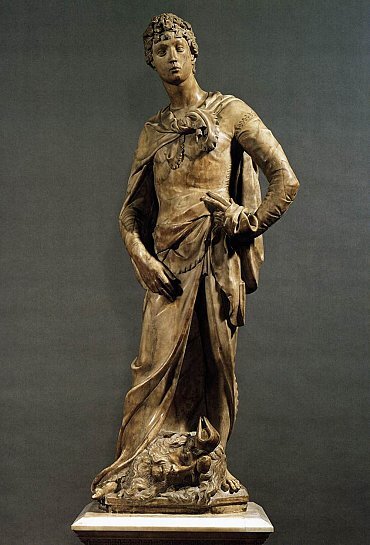The marble David by Donatello

David, the biblical hero, is famous in the literary world for his legendary fight with Goliath and his victory, only by means of a sling. The attention given to the hero was really important and, also from an artistic point of view, many works were made in his honour, among which paintings and sculptures.
We know almost everything about the David by Michelangelo and we have already spoken of the bronze David by Donatello, now we are going to analyze the marble version kept at the National Museum of the Bargello in Florence.
It is a sculpture created by the artist in the juvenile phase, around 1408-1409, in white marble. Until 1416 the statue was at Palazzo Vecchio, from where it was removed in 1781 to be brought to the Uffizi. Then, from the Uffizi Gallery in 1874 it was finally transferred to the Bargello.
David, life-size, is 191 cm tall, and brings at his feet the inscription "Pro patria fortiter dimicantibus Etia adversus hostes terribilissimos Dii prestant auxilium" ( "The gods give support to the brave fighters for their country even against the most fearsome enemies".) which underlines its political significance as a symbol of untamed and libertarian nature of the Florentine Republic, a relatively small republic that fight against great powers.
David is portrayed victorious, after having defeated the giant Goliath, whose head figures at his feet with the stone that killed him still stuck in the middle of the forehead. The pose and the attitude express a conscious pride. He is a young, strong and proud, a warrior conscious of his strength that shows the trophy of the head of Goliath, while maintaining a superficial attitude, almost light-hearted.
We can already see elements of the classical repertoire here, as in the use of perspective and taste for Roman sculpture inspired by the values of humanism although there are nevertheless Gothic elements such as the cloak that hides part of the body.











